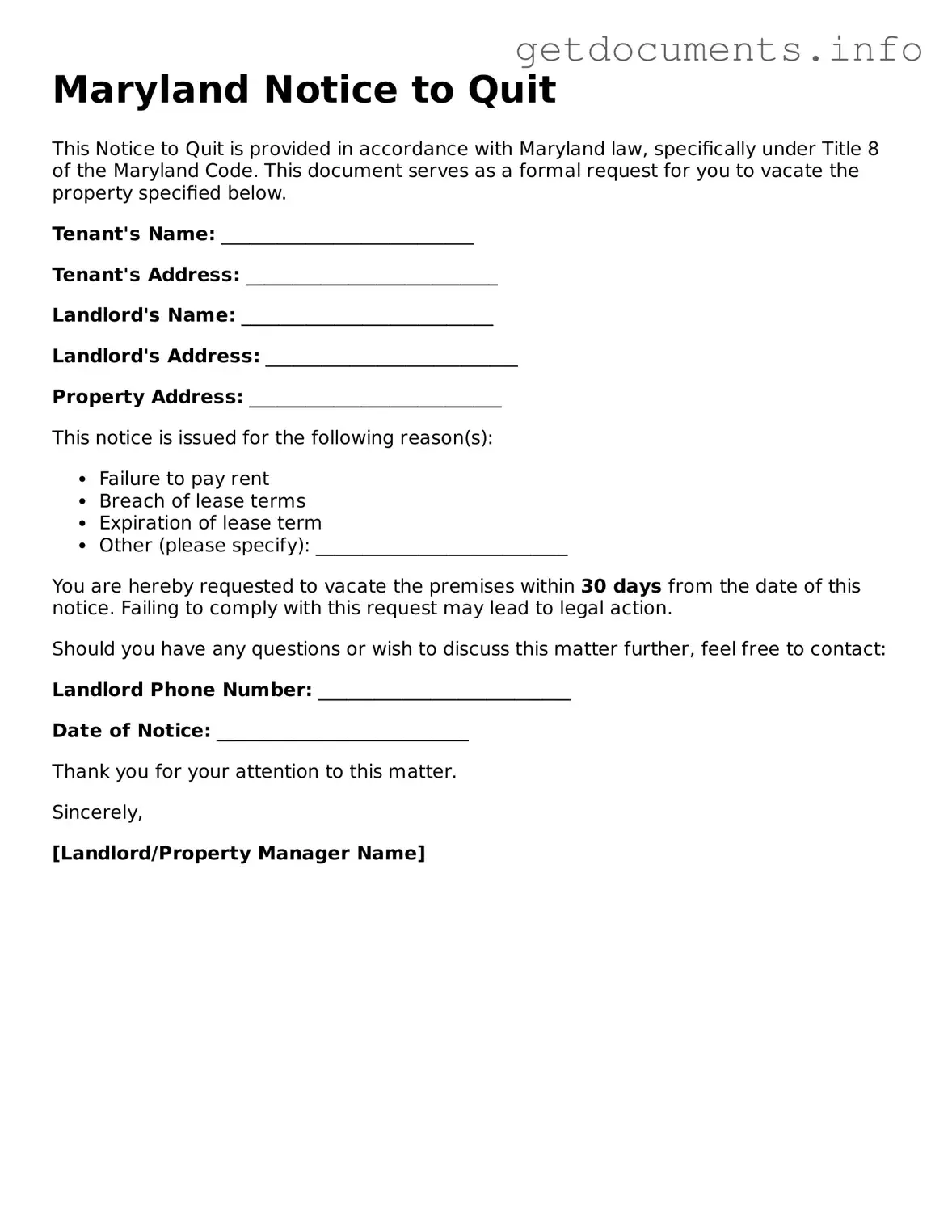Free Notice to Quit Template for Maryland
The Maryland Notice to Quit form is an essential document used by landlords to formally notify tenants of their intent to terminate a lease agreement. This notice provides tenants with information about their lease violation or the need to vacate the property, ensuring clarity in the rental relationship. Understanding this form can help both parties navigate the process smoothly, so consider filling it out by clicking the button below.
Access Notice to Quit Editor
